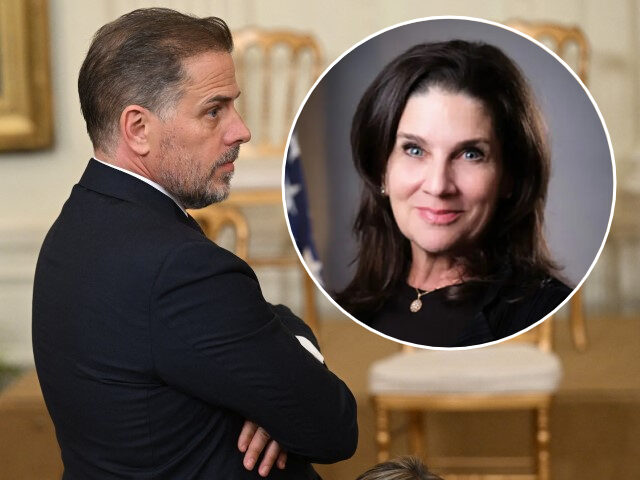The purchaser of Hunter Biden’s art reportedly visited President Joe Biden’s White House 13 times after the president’s son first showcased his paintings at his art dealer’s gallery in New York City.
Elizabeth Hirsh Naftali, a large Biden donor and Biden appointee to the Commission for the Preservation of America’s Heritage Abroad, visited the White House for large events, along with several intimate meetings, including with White House senior adviser Neera Tanden on March 21, according to White House visitor logs reviewed by the Free Beacon.
Naftali is a Los Angeles real estate investor and is influential in California Democrat circles. In 2023, she donated $13,414 to the Biden campaign, along with $29,700 to the Democrat National Campaign Committee this year, according to Business Insider. She also served on Hillary for America’s National Finance Committee, Biden for President’s National Finance Committee, and as deputy finance chair for the Democrat National Committee.
The White House visitor logs show all of Naftali’s visits to the White House occurred in December 2021, after Hunter Biden first exhibited his paintings in November 2021 at his art dealer’s gallery in New York City.
Business Insider reported Monday that Hunter Biden’s gallery has $1,379,000 in receipts for his work.
“Names of buyers are strictly confidential,” Georges Bergès, Hunter Biden’s art dealer, told Business Insider. “Any attempt to get them is illegal and will be reported to the proper authorities.”
According to the three people directly familiar with his own account, Business Insider reported Hunter Biden knew Naftali purchased the artwork.
When questioned about conflicts of interest and ethics concerns, the White House previously claimed Hunter Biden would not know the identities of the “anonymous” art buyers.
Former White House press secretary Jen Psaki defended Hunter’s art scheme as “reasonable,” suggesting the president’s son “is not involved in the sale or discussions about the sale of his art,” and that he will not be “informed” of “who is purchasing his art.”
The art industry is known for shady business transactions. A Senate subcommittee report detailed in 2020 how the art market serves as a vehicle for money laundering:
The art industry is considered the largest, legal unregulated industry in the United States. Unlike financial institutions, the art industry is not subject to Bank Secrecy Act’s (“BSA”) requirements, which mandate detailed procedures to prevent money laundering and to verify a customer’s identity. While the BSA does not apply to art transactions by art dealers and auction houses, sanctions do. No U.S. person or entity is allowed to do business with a sanctioned individual or entity.
…
While the art market is not regulated by the BSA, it is governed by unwritten rules. A large number of art sales happen through intermediaries referred to as “art advisors” who can represent both purchasers and sellers. In a typical transaction, a purchaser may not ask who owns the piece of art they are purchasing; the seller may not ask for whom it is being purchased or the origin of the money. And in general an art advisor would be reluctant to reveal the identity of their client for fear of being cut out of the deal and losing the business.
…
Because the art industry is not subject to BSA requirements, when a piece of art is sold, there is no legal requirement for the selling party to confirm the identity of the buyer or that the buyer is not laundering money through the purchase. While the four biggest auction houses have voluntary anti-money laundering (“AML”) programs, the employees who facilitated art purchases in the Subcommittee’s case study said they never asked the art advisor the identity of his client. Instead, the auction houses considered the art advisor the principal purchaser and performed any due diligence on the art advisor, even when it was well-known that the ultimate owner was someone else. With regard to the funds used to purchase art, the auction houses told the Subcommittee they rely on financial institutions to ensure the integrity of the funds, even though the auction houses interact directly with the buyer. But these voluntary AML policies are just for sales through the auction houses. As stated above, the majority of art sales are private transactions. A private dealer interviewed by the Subcommittee stated she had no written AML policies, tries to work with people she knows and trusts, looks for red flags, and relies on her gut. She also explained that her practices have significantly changed over the years and that she also relies on advice from AML lawyers.
Secrecy, anonymity, and a lack of regulation create an environment ripe for laundering money and evading sanctions.
Follow Wendell Husebø on Twitter @WendellHusebø. He is the author of Politics of Slave Morality.

COMMENTS
Please let us know if you're having issues with commenting.